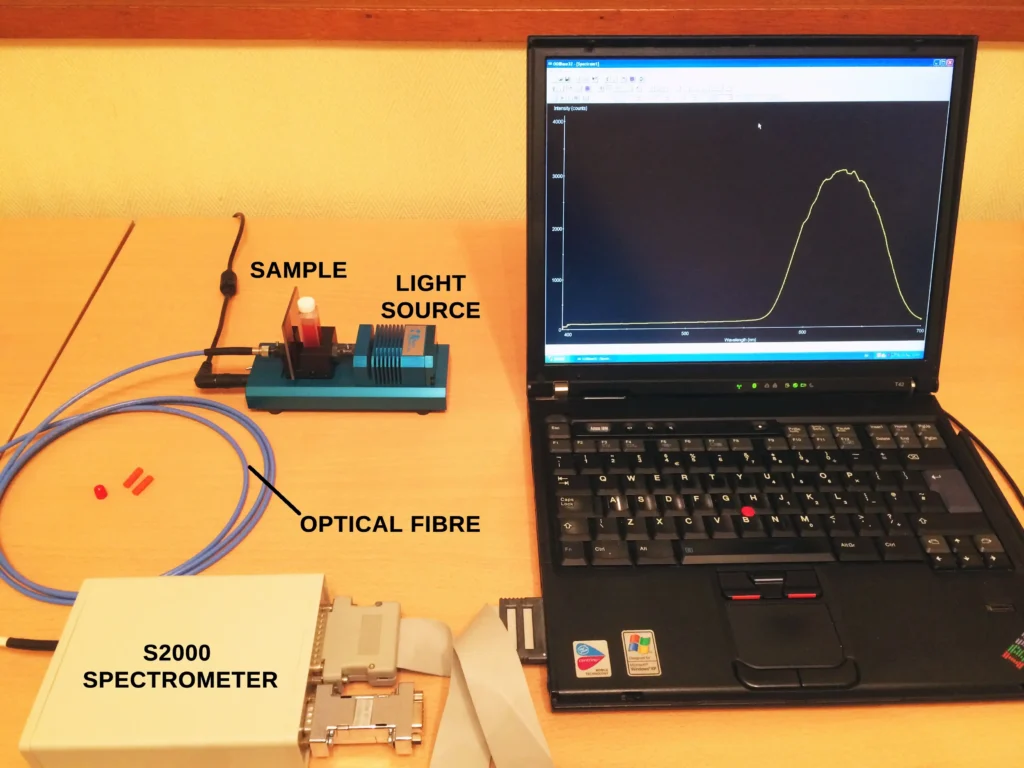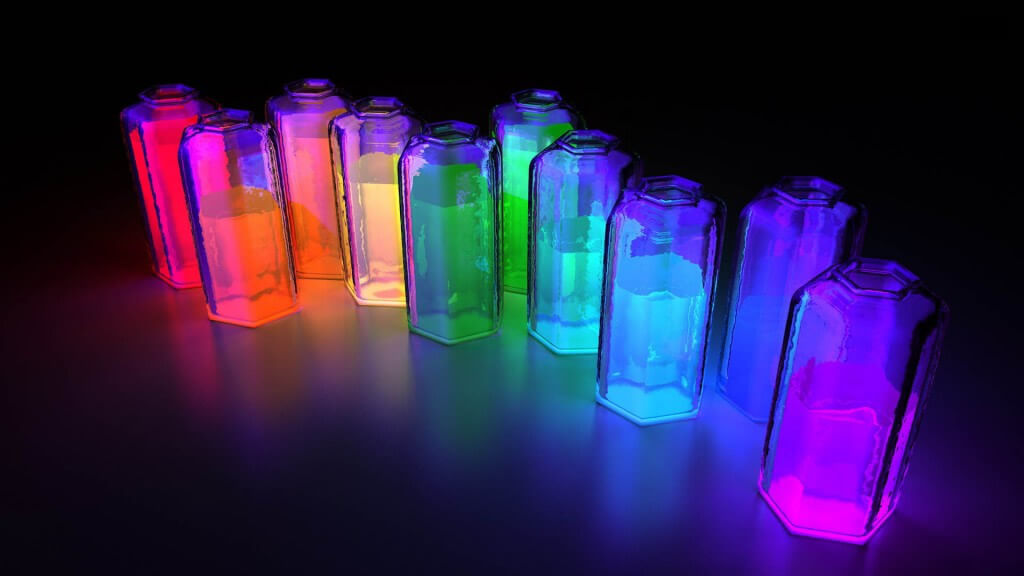
In an earlier post, a popular but fairly basic version of the smartphone spectroscope was introduced. This was constructed from a sheet of thin card. A 20 dollar offering, available from Thunder Optics, was reviewed and a few simple spectra were produced.
In this post we look at a much more solid 3D-printed version.
The Design
This improved type is based on a design by Brad Dudenhoffer at PublicLab.org and represents version 4 of Brad’s original concept. The design is freely available on the Thingiverse 3D printing/sharing site at this link. If you search for “spectrometer” or “smartphone spectrometer” on this popular sharing site, you will find several other hits for alternative models. The Printables sharing site has similar designs for making a spectroscope and connecting it to your phone.
The spectroscope is printed in 3 parts, shown here in 3D rendered representations:
3D Printing Process
The 3 STL files were downloaded from the Thingiverse site, sliced using Creality Print software V6.2 and then converted to G-code. For those of you new to 3D printing, G-code consists of a (very) long list of positional instructions that the printer can understand. A 3D printer is really only a three dimensional plotter, very similar to an industrial robot. These printers have improved vastly over the last 10 years for the mass consumer market and have fallen in price.
For this project, all parts were printed on a Creality K2 Plus 3D printer, with the following print conditions:
- Rafts: No
- Supports: Yes
- Resolution (layer height): 0.2 mm
- Infill: 30%
- Filament type: Black PLA (polylactic acid).
The three finished parts coming straight off my printer can be seen here:
These three parts were cleaned up and any residual support structures removed. The two main halves of the spectroscope were glued with cyanoacrylate adhesive (Superglue) and the grating base was screwed and glued to the body. Any gaps around the edges that could let in scattered light can be blacked out with masking tape.
For the diffraction grating, my earlier concern with the paper version of this spectroscope was with the small size of the supplied grating film. This was eliminated by using the grating shown below. Still inexpensive, still at 1000 lines/mm resolution, mounted on a 35mm slide mount and available from Amazon, eBay or other vendors.
Some Typical Spectra
Florescent light bulb:
The spectral emission lines from the light sources shown here are strongly curved. Ideally, they should all be straight. This is because the grating film is mounted in a card frame, much like an old 35 mm slide, and as such it is not perfectly flat. It becomes slightly warped. The results, nevertheless, produce some reasonable spectra. A potential future solution could be to sandwich the grating film between two thin glass plates, such as a couple of microscopes slides.
The spectrum from the LPS lamp is virtually monochromatic, owing to the special nature of this lamp that emits with a characteristic golden yellow glow. The LPS lamp is one of my personal favourite light sources (as well as lasers, of course!) and there will be more to say about these lamps in future posts. So watch this space!
Final Thoughts...
The results, while similar to the spectra obtained with the craft paper spectroscope, are produced with a much more robust and compact little instrument that you can take outdoors into the field to record the spectra of various sources of light, such as different types of street lamps, billboard displays, and so on.
If you don’t have a 3D printer to make this spectroscope yourself, don’t worry. There are several 3D Printing Service sites online that will manufacture the parts for you for only a few dollars. Some of these sites may also do it for free, if you subscribe for a trial period. All you need to do is to download the STL files for the particular design that you want from a sharing site such as Thingiverse or Printables. Then you can upload these files to the print service of your choice. For a few dollars plus shipping, you will then receive the different parts needed to construct your own smartphone spectroscope.
Good hunting for the smartphone spectroscope that meets your needs!
From Steve’s Open Lab.


